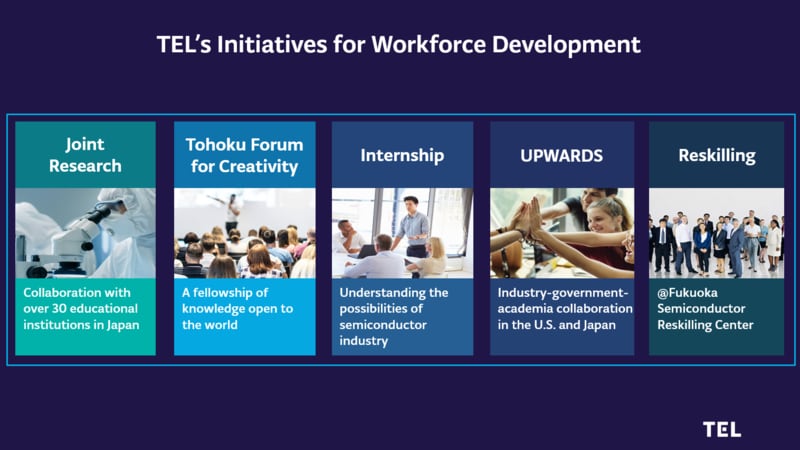The Future of the Semiconductor Industry and its People
Technology

Driven by the vision of becoming “a company filled with dreams and vitality that contributes to technological innovation in semiconductors,” Tokyo Electron (TEL) has been promoting R&D on a global scale through various collaborations with academia and external institutions. This section, #Conference Presentations, will introduce the technological trends surrounding semiconductors, the conference presentations, and the voices of the presenters. In this issue, we present excerpts from Tokyo Electron President & CEO Toshiki Kawai’s invitational lecture at SEMICON Japan 2024.
Biography
-
 1986 Joined Tokyo Electron 2010 Vice President & General Manager 2015 Senior Executive Vice President & COO 2016 President & CEO
1986 Joined Tokyo Electron 2010 Vice President & General Manager 2015 Senior Executive Vice President & COO 2016 President & CEO
1. The Growth and Challenges of the Semiconductor Market
President Kawai began the presentation by discussing the outlook of the semiconductor market and the societal challenges it will face in the near future. The industry is undergoing a technological disruption, moving from the first wave driven by cloud/edge computing, IoT, and Industry 4.0 to a second wave linked to AI, autonomous driving, and AR/VR. As a result, the semiconductor market is expected to exceed $1 trillion by 2030. AI’s ability to learn from the data accumulated in the years of the first wave and make accurate inferences has improved tremendously. The coming years will see even greater advances in technological innovation, further stimulating the demand for computing power and the development of the underlying communications infrastructure. The advent of quantum computing and 6G/7G networks is expected to create the third wave of growth, with some predicting that the semiconductor market will reach $5 trillion by 2050, according to SEMI, easily ten times the current market size. The growth potential is simply enormous.
At the same time, ICT energy consumption is predicted to grow exponentially. If energy consumption continues to grow at its current rate, the world will face a severe electricity shortage within 20 to 30 years. The spread of applications requiring massive data analysis, including generative AI and autonomous driving, could accelerate this trend.
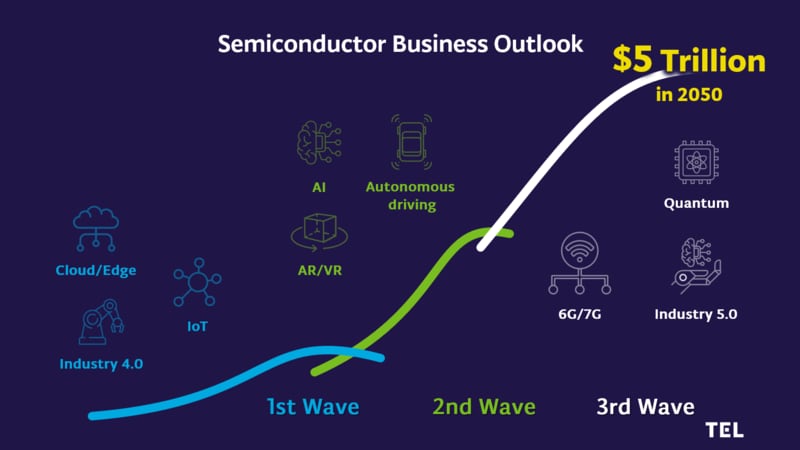
2. How to Create a Digital Society while Protecting the Global Environment
The topic then shifted to the future society powered by semiconductors. Speaking about the current social trends, Kawai pointed out that achieving the digitalization of society while preserving the global environment (through decarbonization)—or making our society “Digital & Green”—has become a common goal and a shared value of the world.
There are two approaches to achieving this goal. "Green by Digital" aims to create a green society through the power of digital technologies such as ICT (information and communications technology) "Green of Digital" aims to promote energy conservation in digital infrastructure such as data centers. Semiconductors are at the heart of various digital devices and play a central role in technologies that support our way of life. Semiconductor technology is the technology base of our expanding digital society and is also critical to protecting the environment. That is why semiconductors must continue to evolve. They need to have higher speed, larger capacity, superior reliability, and lower power consumption.
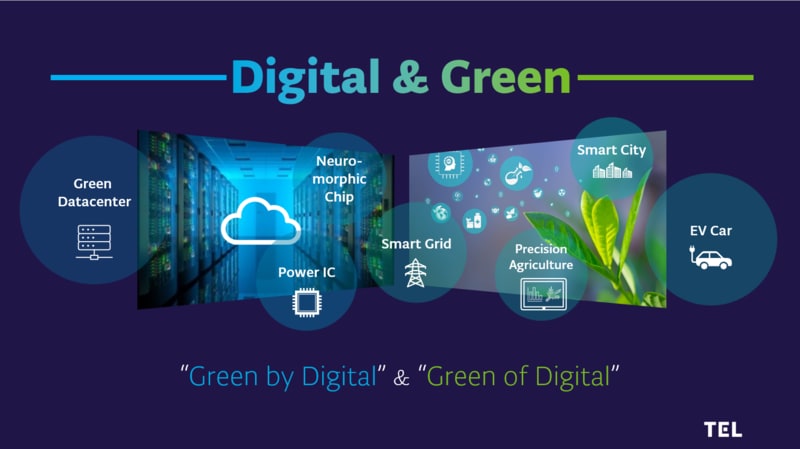
3. Achieving a “Digital & Green” Society through Semiconductor Manufacturing
Semiconductors help power our society and protect the environment, enabling a “Digital & Green” society. There are two approaches in semiconductor manufacturing that can accelerate this change. One is physical scaling, which is the traditional way to integrate more electronic circuits on a chip. The other is heterogeneous integration, a technology that integrates multiple chips and functions—such as processors and high-bandwidth memory devices—into a single package. By combining these two approaches, remarkable advances such as AI semiconductor chips can be produced. AI semiconductors are manufactured through front-end processing and advanced packaging. As further innovation takes place in these areas, significant growth is expected for both markets, including an estimated 10%* CAGR (compound annual growth rate) for the front-end market and a 14%* CAGR for the testing/assembly market (which is a part of the advanced packaging market) between 2023 and 2030. *Source: TechInsights
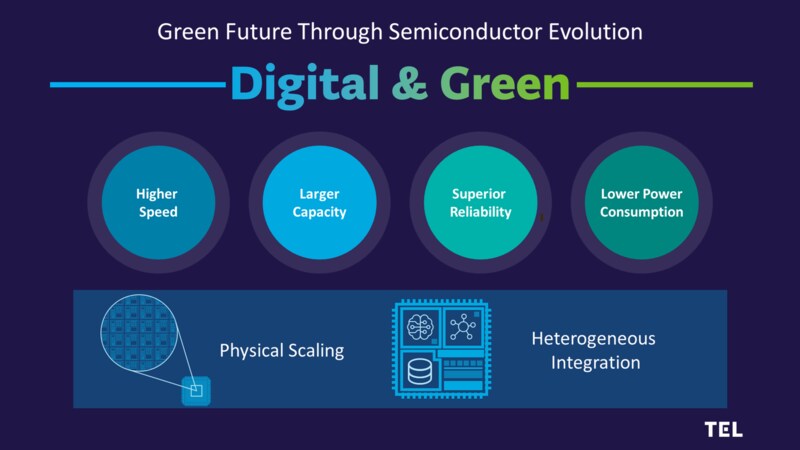
Kawai delivered a strong message that TEL will support a “Digital & Green” society through its contribution to technological innovation in semiconductors, while continuing to pursue sustainable business growth by providing the best products and best technical service.
4. People are the Key to Building our Future
Kawai emphasized that the development of human resources is critical to the sustainable growth of society, industries, and businesses. He also noted the need for a more diverse workforce as the business field expands and requires a greater variety of experience and knowledge. As the market has the potential to grow tenfold in the near future, the important thing is to focus on growth. In manufacturing, for example, we need to implement a digital transformation that takes full advantage of AI and robotics, and that requires a wide range of professionals in these areas and more.
Guided by its vision to become “a company filled with dreams and vitality that contributes to technological innovation in semiconductors,” TEL believes that its corporate growth is enabled by people, and our employees both create and fulfill corporate values. As a result, the company focuses on motivating its employees and developing their skills.
The five points for motivation-oriented management are as follows: 1. Awareness that our company and work contributes to the development of industry and society (TEL’s Shared Value) 2. Vision and aspiration of our company’s future (medium-term management plan) 3. Opportunities to embrace challenges (R&D and capital investments) 4. Fair evaluations that recognize employee efforts and offer competitive rewards globally 5. A workplace with an open-door policy and constructive communication (easy internal communication)
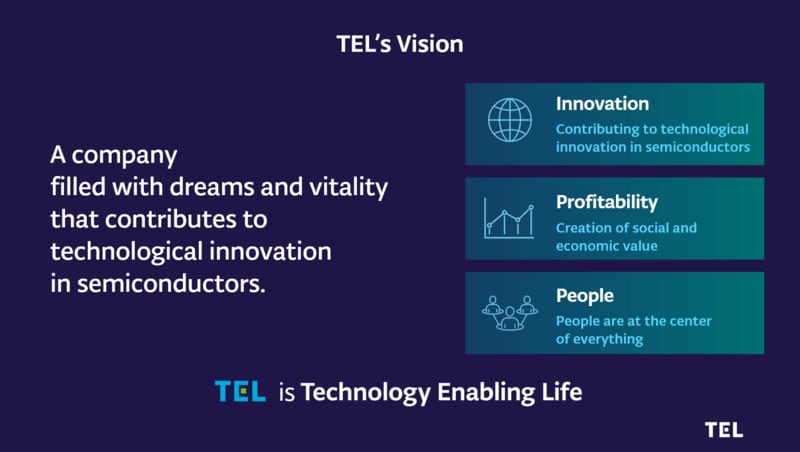
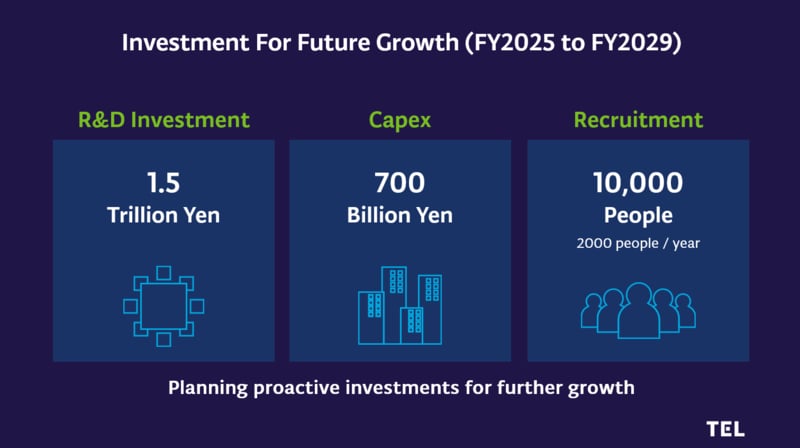
He also discussed various workforce development initiatives at TEL, including industry-academic consortia and internships. The company collaborates with universities and technical colleges around the world in the fields such as AI and process/material engineering, while training promising students through joint research programs. As an example of an international collaboration, Kawai cited UPWARDS, the U.S. - Japan partnership of 11 universities for Workforce Advancement and Research & Development in semiconductors. Through this program, TEL supports the education of students and researchers who will drive future semiconductor innovation globally. Finally, he delivered a strong message to the students, expressing his hope that they would take an interest in the semiconductor industry and join this field. (This information is as of January 2025.)
